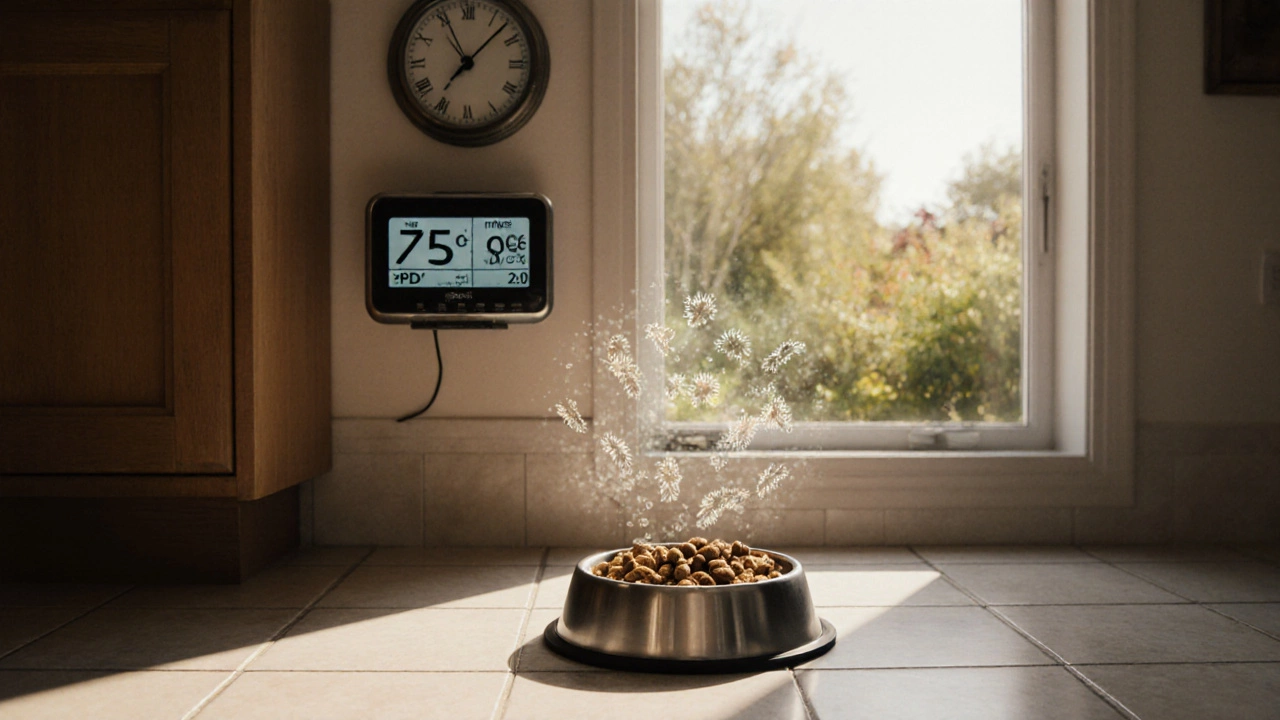Bacterial Growth in Dog Food
When dealing with bacterial growth in dog food, the unwanted multiplication of harmful microbes inside pet meals. Also known as foodborne bacterial contamination, it poses real risks for dog nutrition, the balance of nutrients a dog needs for growth and wellbeing and overall pet health, the physical condition and disease resistance of your canine companion. Understanding food safety, practices that keep food free from harmful organisms and proper storage conditions, temperature and humidity controls that slow bacterial growth can dramatically cut the chance of contamination.
Most bacterial culprits—like Salmonella, E. coli, and Clostridium perfringens—thrive when food sits warm or moist for too long. In the pet food world, even a small lapse in temperature control can let colonies explode, turning a safe kibble bag into a health hazard. The link between poor storage and dog illnesses is clear: vomiting, diarrhea, and more serious infections often trace back to spoiled meals. That’s why manufacturers stress “use‑by” dates, but it’s the owner’s daily habits that seal the deal.
Key Strategies to Prevent Bacterial Growth
First, keep dry kibble in airtight containers and store it in a cool, dry pantry. Moisture is the main fuel for bacteria, so a sealed bag stops humidity from sneaking in. Second, treat wet food like any perishable item—refrigerate leftovers within two hours and discard any portion left out for more than four hours. Third, wash hands and clean feeding bowls with hot, soapy water after each meal; residues act as breeding grounds. Finally, rotate stock so the oldest packages get used first, ensuring you always serve food within its prime window.
Beyond storage, ingredient quality matters. High‑protein meats can harbor more bacteria if not processed correctly, while additives like preservatives help keep microbes at bay. Choosing brands that follow strict HACCP (Hazard Analysis Critical Control Point) protocols adds another layer of protection. When you pair reputable products with good storage habits, you create a two‑front defense that keeps bacterial growth in check and supports optimal dog nutrition.
Armed with these facts, you’ll spot the warning signs, choose safer foods, and store them right. Below you’ll find articles that dive deeper into specific bacteria, detailed feeding schedules, and real‑world tips to keep your pup’s meals fresh and healthy.
Posted By Bryndle Redding On 22 Oct 2025 Comments (0)
Can You Leave Dry Dog Food Out All Day? Safety & Shelf‑Life Guide
Learn if leaving dry dog food out all day is safe, how temperature and humidity affect kibble, and get practical tips to keep your dog's meals fresh and healthy.
READ MORE